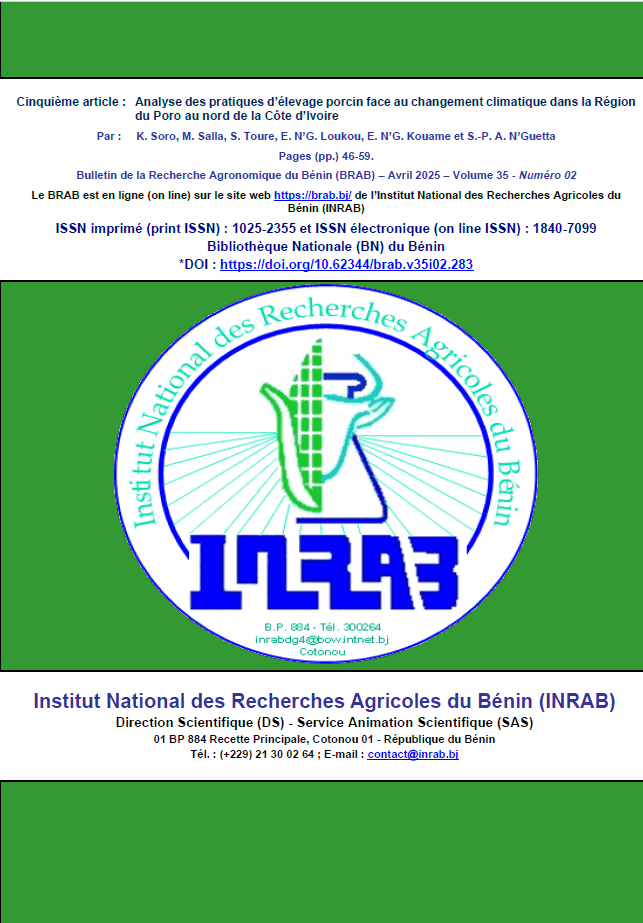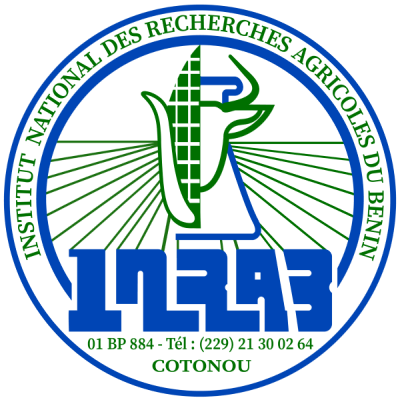one ANALYSIS OF PIG FARMING PRACTICES IN CLIMATE CHANGE CONTEXT IN THE PORO REGION IN NORTHERN COTE D'IVOIRE
PIG FARMING PRACTICES IN THE PORO REGION IN NORTHERN COTE D'IVOIRE
DOI:
https://doi.org/10.62344/brab.v35i02.283Keywords:
ig, pigsty, straying, Poro, livestock systems, Côte-d’IvoireAbstract
Abstract
Faced with climate change and the deficit in animal protein, the Ivorian State is turning to short-cycle animal breeding through the Short Cycle Livestock Development Project to reduce poverty and ensure food security. This study aims to characterize pig-farming systems in the administrative region of Poro in the context of climate change. To do this a survey was conducted among 35 pig farmers. The study shows that farms are mainly run by men (94%), who are mostly farmers or indigenous traders (91%). The average herd size in piggeries is 28 ± 26 pigs, with a predominance of fattening pigs (57%). The average weight at slaughter is 111.54 ± 7.35 kg. The pigs' diet is based on the use of local products by the farmer (89%) and distributed twice a day (69%). The main pathologies encountered are mange and diarrhea. Three farming systems are observed. The traditional system, where the animals roam all year round or during the dry season, and are confined during the rainy season in rudimentary habitats, without veterinary monitoring. No prophylaxis plan is in place. The semi-intensive system, integrated into agriculture, pigs are monitored. They are in relatively well-maintained pigpens during the rainy season. During the dry season, they roam, but near watering points or in orchards to feed and enjoy the shade. The pigs' diet is mixed. The improved intensive system, where the pigpens are built with durable materials and well compartmentalized. The pigs are permanently confined and receive industrial feed. A veterinarian is responsible for monitoring their health.
Keywords: Pig, pigsty, straying, Poro, livestock systems, Côte-d’Ivoire

Published
Issue
Section
License
Copyright (c) 2025 Bulletin de la Recherche Agronomique du Bénin

This work is licensed under a Creative Commons Attribution-NoDerivatives 4.0 International License.
Les articles publiés par le Bulletin de la Recherche Agronomique du Bénin sont en libre accès. Ils sont gratuits pour tout le monde, immédiatement téléchargeables dès la publication et distribués sous la licence CC BY-NC-ND (https://creativecommons.org/licenses/by-nc-nd/4.0/).







